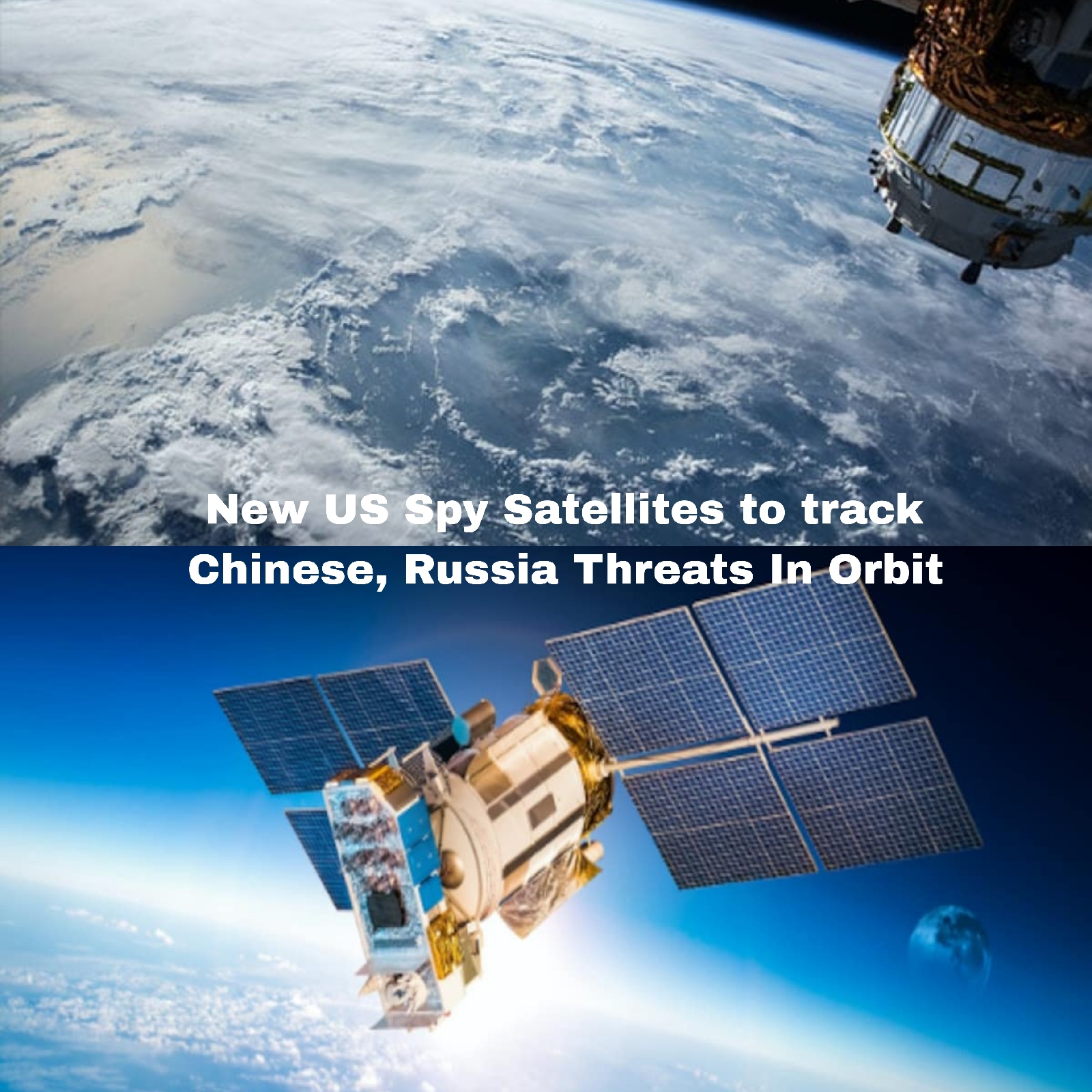New US Spy Satellites to Track Chinese, Russian Threats in Orbit
The US Space Force is preparing to launch a new constellation of satellites this summer that will monitor and counter the growing threats from China and Russia in space. The satellites, dubbed "Silent Barker", will be the first of their kind to complement ground-based sensors and low-earth orbit satellites, according to the Space Force and analysts.
Why Silent Barker?
The name Silent Barker comes from the combination of two existing programs: Silent Sentry and Space-Based Space Surveillance (SBSS) Block 10, also known as Barker. Silent Sentry was a demonstration program that used passive sensors on orbiting satellites to detect and track radio frequency emissions from other satellites. SBSS Block 10 was a follow-on program that aimed to provide persistent surveillance of geosynchronous orbit, where many high-value US military and intelligence satellites operate.
The new constellation will merge the capabilities of these two programs and provide a more comprehensive and resilient situational awareness of the space domain. Silent Barker will be able to detect, track and characterize objects in geosynchronous orbit, such as satellites, debris and potential threats, using both passive and active sensors. The constellation will also be able to communicate with other space systems and ground stations to share information and enable rapid response.
What are the threats from China and Russia?
The US has long relied on its space assets for critical functions such as navigation, communication, intelligence, missile warning and weather forecasting. However, these assets are increasingly vulnerable to the growing capabilities and ambitions of China and Russia in space.
Both countries have developed anti-satellite weapons that can potentially disable or destroy US satellites in various orbits. These include direct-ascent kinetic missiles, co-orbital satellites with robotic arms or explosives, lasers, jammers and cyberattacks. Both countries have also demonstrated their ability to launch satellites that can maneuver close to other satellites and conduct espionage or interference activities.
According to the Office of the Director of National Intelligence, China has weapons intended to target US and allied satellites, and "counterspace operations will be integral to potential PLA military campaigns". One example is China's SJ-21 satellite, which was launched in 2021 and later successfully pulled a defunct Chinese satellite several hundred miles into a higher orbit. Another Chinese satellite, the Sijian-17, is equipped with a robotic arm that "could be used for grappling other satellites", according to a 2022 Defense Intelligence Agency report.
Russia has also been developing and testing various counterspace capabilities, such as the Nudol missile system that can intercept satellites in low-earth orbit, the Olymp-K satellite that can perform rendezvous and proximity operations with other satellites, and the Kosmos-2499 satellite that can eject sub-satellites with unknown functions. Russia has also been accused of conducting anti-satellite tests in orbit, such as the one in July 2020 that created a cloud of debris near a Russian satellite.
How will Silent Barker help?
Silent Barker will provide the US with a more robust and persistent awareness of the activities and intentions of China and Russia in space, especially in geosynchronous orbit where many vital US satellites reside. The constellation will be able to detect any anomalies or threats in real time and alert the relevant authorities for possible action.
The constellation will also enhance the deterrence effect of the US by signaling its readiness and capability to defend its space assets. By demonstrating its ability to monitor and attribute any hostile actions in space, the US will make it clear that it will not tolerate any aggression or interference in this domain.
Silent Barker is part of a broader effort by the US to modernize and strengthen its space capabilities in response to the evolving challenges from China and Russia. The US has also been developing new systems such as the Next-Generation Overhead Persistent Infrared (NGOPIR) satellites for missile warning, the Protected Tactical Satellite (PTS) for secure communication, and the Evolved Strategic SATCOM (ESS) for nuclear command and control. The US has also been collaborating with its allies and partners, such as Japan, Australia, Canada and France, to enhance information sharing and interoperability in space.
Conclusion
Space is becoming an increasingly contested and congested domain, where the actions of China and Russia pose significant risks to the security and interests of the US and its allies. The launch of Silent Barker this summer will mark a major milestone in the US's efforts to maintain its edge and advantage in space. The new constellation will provide unprecedented situational awareness and deterrence in geosynchronous orbit, where many critical US satellites operate. Silent Barker will also demonstrate the US's commitment and resolve to protect its space assets and uphold the rules and norms of responsible behavior in space.
Source:
FAQ's
How many spy satellites does USA have?
There were a lot of United States military satellite projects that were started in the 1950s. Now, there are 123 military satellites run by the United States that orbit the Earth.
What is the resolution of China spy satellites?
Jianbing-5 satellites are built by the Shanghai Academy of Spaceflight Technology (SAST) and launched from the Taiyuan Satellite Launch Center (TSLC) and provide military analysts synthetic-radar imagery purportedly at a spatial resolution as sharp as 5 meters over the L-band (1–2 GHz).
Does India have spy satellites?
THIRUVANANTHAPURAM: India's first 'spy' satellite, RISAT-2, has returned to Earth's atmosphere after thirteen and a half years of service.
Who has the most spy satellites in the world?
China
Why use balloons when satellites exist? China has an extensive satellite network. In a Nov. 2022 report, the Defense Department said China's intelligence, surveillance, and reconnaissance-capable (ISR) satellite fleet had more than 260 systems, second only to the U.S., as of the end of 2021.





0 Comments